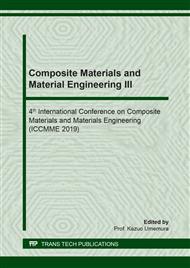p.319
p.325
p.331
p.337
p.345
p.351
p.357
p.365
p.371
Specific Energy Consumption Improvement with Applying Stainless Wire Mesh Porous Material for a Hot Air Dryer
Abstract:
This research was proposed to applying stainless wire mesh porous material for specific energy consumption improvement of a hot air dryer. In experimental consist two main parts, first part was a comparison of drying with and without hot air recirculation duct. Second part was a comparison of drying with and without stainless wire mesh porous material in drying chamber and hot air recirculation duct. Tilapia was drying product, stainless wire mesh in drying chamber was constant PPI=8 and 6 layers, stainless wire mesh in hot air recirculation duct was constant PPI=8 and varied layer at 6, 8 and 12 layers and hot air recirculation ratio 40%, 60% and 80%. Experimental result was, drying with hot air recirculation duct was higher drying rate than without recirculation duct and drying rate was increased, drying time was decreased and SEC was decreased with increased hot air recirculation ratio. At recirculation ratio 80%, SEC was lowest and decreased to 54.52% compared with without recirculation duct. Therefrom, the stainless wire mesh porous materials were inserted in the drying chamber and recirculation duct at PPI=8, 6 layers and PPI=8, 12 layers, respectively and used recirculation ratio 80%, it was found that SEC was lowest and decreased as about 62.21%.
Info:
Periodical:
Pages:
345-350
Citation:
Online since:
May 2019
Authors:
Price:
Сopyright:
© 2019 Trans Tech Publications Ltd. All Rights Reserved
Share:
Citation:


